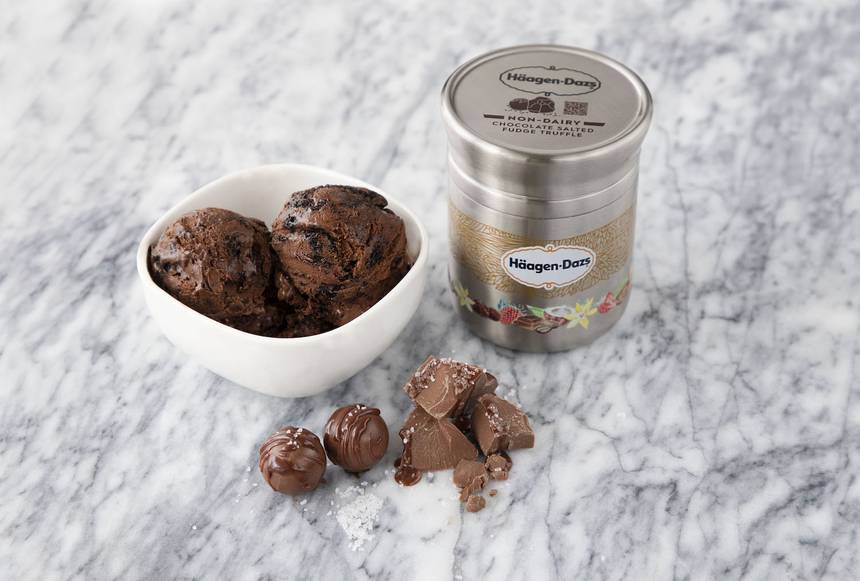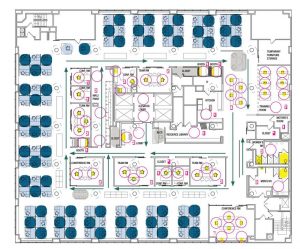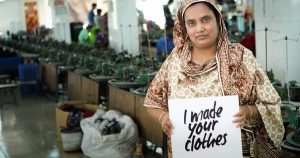Grocery stores may soon offer your favorite brands in reusable containers

Loop’s reusable packaging service is coming to brick-and-mortar stores in U.S., Canada, and France.
It has been a year since the Loop initiative launched to great fanfare. An admirable effort by major household brands to reduce disposable packaging, Loop offers food and cleaning products in reusable containers, which people can order online and have delivered to their homes, then return via UPS. Loop has been rolled out slowly across parts of the U.S. Atlantic coast and Paris, France. Now, one year later, it’s gearing up to enter Canada and the U.K., and eventually Japan, Germany, Australia, and more U.S. cities by 2021.
One major change is that Loop will soon be accessible in brick-and-mortar retailers. This means that customers will be able to go to participating grocery stores and visit the Loop aisle, selecting whatever products they want to buy, while also returning any empty containers they have without having to ship them. Adele Peters writes for Fast Company,
“It’s still designed to be simpler than traditional refill systems in stores — rather than cleaning and refilling your own container, you bring back dirty containers, drop them off, and buy already-packaged products on the shelf. As with online orders, you’ll pay a deposit on the container and then get it back when the container is returned.”
It’s still not cheap.
Many people are eager for Loop to scale up in order to bring down the prices. Right now there are limited items available, so there’s no competitive pricing, even though the company is adding brands as quickly as it can – roughly one every two days. The food items tend to be expensive, i.e. $14 jar of nut butter and $5 dried pasta, plus there’s the upfront cost of deposits on food containers and the tote bag in which they’re delivered. Shipping is $20, which one reviewer said “is never going to fly… in this age of free shipping,” but the Loop site says shipping is now free for orders over $100. Kate Bratskeir wrote for the Huffington Post that her orders cost more than anticipated:
“My first order came to a whopping $85.70. For only six items! To be fair, $32 was for packaging deposits and $20 was for shipping. And I snagged a $20 discount as a first-time customer. For my second round of orders, I bought only two more products, so the total was $37 with the deposits. After using the service for two months, buying a total of eight products and receiving refunds for all my deposits, I paid a total of $69.70.”
In Loop’s defence, it does offer many appealing products that I cannot currently find in refillable format, such as ice cream, cooking oils, vinegar, and frozen veggie burgers. (Other items, like rolled oats, candy, pasta, and spices, can be purchased at Bulk Barn using my own containers at prices comparable to Loop’s.) If it can all be scaled up, as CEO Tom Szaky promises, it could be revolutionary, especially if products are available in-store. Szaky told Peters,
“Today, in small scale, it makes no economic sense because everything is inefficient in small scale. But a lot of our retail partners and our brand partners have modelled this in large scale. And it’s come out very exciting — it’s going to be able to be executed at scale and not cost the consumer more.”
Innovation has to start somewhere.
Critics have called Loop a project created “by rich people for rich people.” This got me thinking about how backward it is that one must need money in order to waste less, and how, in an ideal world, the creation of superfluous packaging waste would be more costly than efforts to reduce it. A commenter once used the example of “Speed Kills!” signs having little effect on people’s driving habits until they start getting slapped with tickets. My mind immediately flew to the possibility of people having to pay a surcharge in order to walk out of a store with disposable ‘convenience’ packaging, and how those surcharges could fund the development of reusable containers, thus bringing down the cost for everyone. But until that day comes, it appears one must have plenty of disposable income in order to support initiatives such as Loop – the age-old fate of the early adopter.
Nevertheless, I am happy to see that Loop’s first year can be called a success, and I am eager to try it myself once it comes to Canadian grocery stores. Hopefully by then prices will have dropped somewhat and the system further refined. I’d want to know, too, that the containers are being cleaned and filled within the province, and not shipped across the continent, which could undermine the environmental benefit. We need creative thinkers and clever solutions to break us out of business as usual. Loop is a great example of that.
Loop’s reusable packaging service is coming to brick-and-mortar stores in U.S., Canada, and France.







